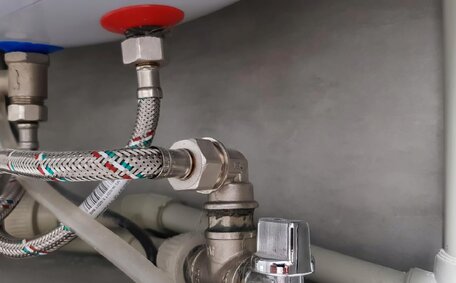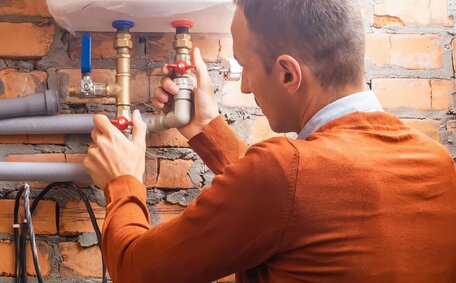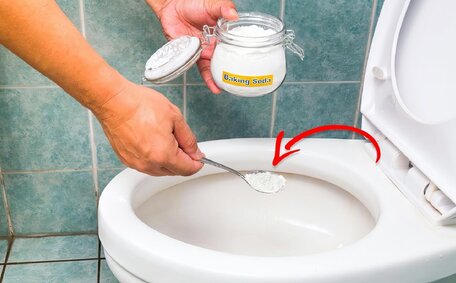Understanding Gas Meters and Why Upgrades are Needed
Gas meters are crucial for all properties with a mains gas connection. They precisely measure and monitor gas usage, ensuring occupants are billed accurately for their consumption. Upgrading outdated or malfunctioning gas meters ensures safety and dependability.
Several key reasons necessitate gas meter upgrades:
- Technology Advancements - Newer meters offer features such as remote reading, leak alerts, and improved accuracy.
- Safety Compliance - Upgrades align meters with current safety standards and regulations, benefiting users and utility providers.
- Faulty Meters - Defective meters causing inaccurate billing due to incorrect gas usage readings. Replacement reinstates accuracy.
- Mandatory Replacements - Utility companies may mandate meter upgrades after a typical lifespan of 15-20 years.
Typically, consumers aren’t directly charged when a gas meter upgrade is scheduled. Trained technicians handle all aspects of the swap-out, ensuring you can access your essential services at home. However, relighting appliances and confirming safety after an upgrade remains the occupant’s responsibility.
Meter replacement will briefly interrupt your home’s gas supply. Technicians will disconnect the old metre, fit the new upgraded model, conduct pressure tests to ensure no leaks, and restore supply. Consumers must then go around their property to access your gas appliances for relighting before resuming normal usage.
Australian gas meters, both residential and commercial, are regulated by the stringent standards of the National Measurement Institute. Upgrading ageing or faulty metres in line with these guidelines ensures ongoing safety, accuracy and compliance for all parties.
The Process and Steps for Upgrading Your Gas Meter
A residential gas meter upgrade follows a defined process from assessment to installation.
- Initial Assessment – A technician will first inspect your existing metre setup and determine if an upgrade is required or recommended.
- Application Submission – If an upgrade is needed, you’ll complete a standard application form authorising the gas company to replace your metre.
- Notification of Approval – After the application is processed, you’ll receive confirmation via phone, email or text that the upgrade is approved.
- Pre-Installation – Prior to the upgrade, you may receive useful safety information and details regarding temporary service interruptions.
- Meter Exchange – A qualified technician will disconnect supply, replace the old meter with a new one, conduct pressure tests, and restore supply.
- Post-Installation – After installation, relight all gas appliances and perform leak checks before resuming normal operation.
- Completion Notification – An SMS notification will confirm your new metre is fully installed and operational.
Upgrading a faulty or outdated gas metre ensures ongoing safety, accuracy and performance. If you suspect your metre requires replacing or have any other queries, please contact your qualified gas technician for tailored advice and guidance.
Applying for a Gas Meter Upgrade
Applying to upgrade your residential gas metre is a straightforward process. The key steps include:
- Confirm Ownership – You’ll need to verify property ownership before submitting an application. Tenants require written owner approval.
- Supply Capacity – Determine if you need a higher supply capacity from the gas distributor based on your usage.
- Complete Application – Provide details like contact information, address, and describe the reason for requiring an upgrade.
- Meet Conditions – Fulfil any site-specific requirements as specified by your gas company.
- Submit Form – Return the finished application to the gas company via post, email, fax or online lodgement.
- Assessment & Approval – The gas company will evaluate your application against eligibility criteria before approving.
- Installation – An installation crew will be assigned once approved and you’ll be notified of the replacement date.
Upgrading residential gas metres through this application process ensures occupants benefit from improved safety, accuracy and performance over time.
The Site Visit and Installation of the New Gas Meter
Once your gas metre upgrade application is approved, North Epping Plumbing will contact you to schedule a site visit for installation. Our qualified technicians service the North Epping area and can answer any questions about preparing for the metre replacement.
On the day of installation, the technician will first cut off your gas supply at the meter. The technician will then conduct pressure tests to check for leaks and confirm safety.
The technician will then replace your old meter with the upgraded model. This typically takes 30-60 minutes, depending on site access and complexity.
Before restoring gas supply, grant the technician access to your property to assist with appliance relighting. This ensures everything functions properly when supply is restored. Expect minor disruptions of 1-2 hours from the initial shutdown to full restoration.
Once the new metre is completely installed and your gas fittings checked, the technician will notify you that the work is finished. They can provide advice on using and maintaining your new metre. You’ll receive an SMS affirming your new meter, critical for systems like life support, is functioning.
Coordinating metre upgrades involves collaboration among residents, gas distributors, and licensed technicians. North Epping Plumbing manages the entire process to ensure upgrades are efficient and hassle-free for customers.
Timelines and Costs for Gas Meter Upgrades
The replacement of a defective residential gas meter with a newer model typically spans 1 to 2 weeks from application to completion. However, should you need home installations of a more complex nature, these may require longer timeframes.
Once your upgrade application is approved, you’ll be notified of available installation dates. Appointments typically align with scheduled maintenance downtime for your area. This minimises service disruptions when existing metres are disconnected prior to upgrading.
Standard upgrades are typically free for utility customers, though specific instances may incur costs:
- Increasing gas supply capacity for higher demand
- Modifying pipework or connections
- Installing advanced metering equipment
Discuss time and cost estimates with your gas utility provider or accredited technicians, such as North Epping Plumbing. They manage required metre upgrades to ensure optimal safety, accuracy and performance over time.
Responsibilities for Gas Meters and Ensuring Access
Both gas companies and homeowners have important responsibilities concerning residential gas metres.
As a homeowner, you have a duty to protect your gas meter from damage and provide safe, unobstructed access to your meter at all times. Standards dictate that meters should have a minimum clearance of one meter in front and to each side. This enables inspection, maintenance, upgrades, and emergency access when required.
Gas companies are responsible for the installation, ownership, maintenance, and updating of your meter in case of faults. They must ensure all residential metres meet Australian standards and safety regulations throughout their operating lifespan.
By upholding both parties’ responsibilities, gas metres will continue operating reliably while enabling accurate billing and emergency response. Failing to provide clear metre access puts owners at risk of fines or supply disconnection. So maintaining the required safe working space is essential.
If you have concerns about gas metre responsibilities or access requirements on your property, your qualified gas technician can provide further guidance.
Safety Considerations During and After a Gas Meter Upgrade
Safety is paramount when upgrading gas metres. Qualified technicians take vital precautions to protect residents and property throughout the process. However, occupants also have important responsibilities to uphold.
Technicians will take the following steps during the meter upgrade:
- Enforce site security by restricting access exclusively to essential personnel
- Cordon off unsafe areas and provide clear barricading where required
- Verify that on-site equipment adheres to electrical safety standards
- Perform comprehensive leak detection tests before re-establishing the gas supply
As the occupant, you must:
- Keep children, pets and vulnerable people away during the works
- Refrain from smoking or naked flames while supply is interrupted
- Grant complete, unobstructed site access as needed by technicians
- Check all fixed gas appliances are turned off prior to upgrade commencing
Once the new installation of your meter is complete, technicians will confirm the site’s safety before departing. However, you should immediately check for gas leaks and relight your appliances as a precaution.
If you ever smell gas either before, during or after the metre upgrade, evacuate the site and contact emergency services immediately. Never assume others have reported the leak.
Occupants and technicians collaborate on meter upgrades to ensure safety throughout the process.
Relighting Appliances and Managing Leaks Post-Installation
After your gas metre upgrade is complete, restoring supply and relighting appliances is a crucial next step. Follow these safety precautions:
- Check all fixed gas appliances are OFF prior to the technician reconnecting gas.
- Once supply is restored, systematically relight each appliance per the manufacturer instructions.
- Inspect burner operation and test controls to ensure proper function.
- Thoroughly ventilate the property when relighting to prevent hazards.
- If any appliance fails to ignite or operate correctly, turn it off and contact the manufacturer immediately for servicing.
It’s vital to check for leaks any time gas supply is interrupted. Warning signs include:
- A distinct 'rotten egg’ odour indicating gas escape
- Unusual appliance behaviour like fluctuating flames
- Failure to ignite or slow ignition
If you detect or even suspect a gas leak following the metre upgrade:
- Evacuate occupants and isolate the site immediately.
- Call the Fire Brigade on 000.
- Notify your gas distribution network.
- Do NOT re-enter, smoke, turn power on/off or use phones until the property is confirmed safe.
- Only authorised technicians can conduct leak inspection/repairs before restoring supply.
For further assistance managing appliance relighting or potential gas leaks after your metre upgrade, contact the team at North Epping Plumbing on 1300 349 338 or [email protected].
Understanding Regulations and Standards for Gas Meters
Gas metres and infrastructure in Australia are governed by strict regulations and standards to uphold safety, accuracy and reliability. Compliance with these guidelines is compulsory for utility companies and metering contractors.
Key requirements include:
- Meters are required to conform to the National Measurement Institute’s Pattern Approval specifications.
- Maximum permissible errors ensure metre accuracy for billing purposes.
- Materials and components must withstand operating conditions like vibration, temperature, pressure, and gas exposure.
- Regular sample testing by authorities guarantees ongoing performance.
- Detailed installation and operating procedures enforced for all sites.
When gas metres require upgrades or replacement, accredited technicians follow the latest editions of gas fitting standards AS/NZS 5601 and AS/NZS 4645 to maintain safety. This governs aspects like:
- Metre bracket and fastener specifications.
- Mandatory pressure testing for leaks.
- Proper purging and gas containment procedures.
- Accurate documentation for compliance and tracking.
By replacing faulty, outdated or damaged gas metres with models meeting current Australian standards, homeowners and businesses benefit from enhanced safety during operation. Technicians like those at North Epping Plumbing manage necessary upgrades while ensuring full regulatory alignment.
For further information or any questions regarding gas metre compliance in your home, contact our team on 1300 349 338.






